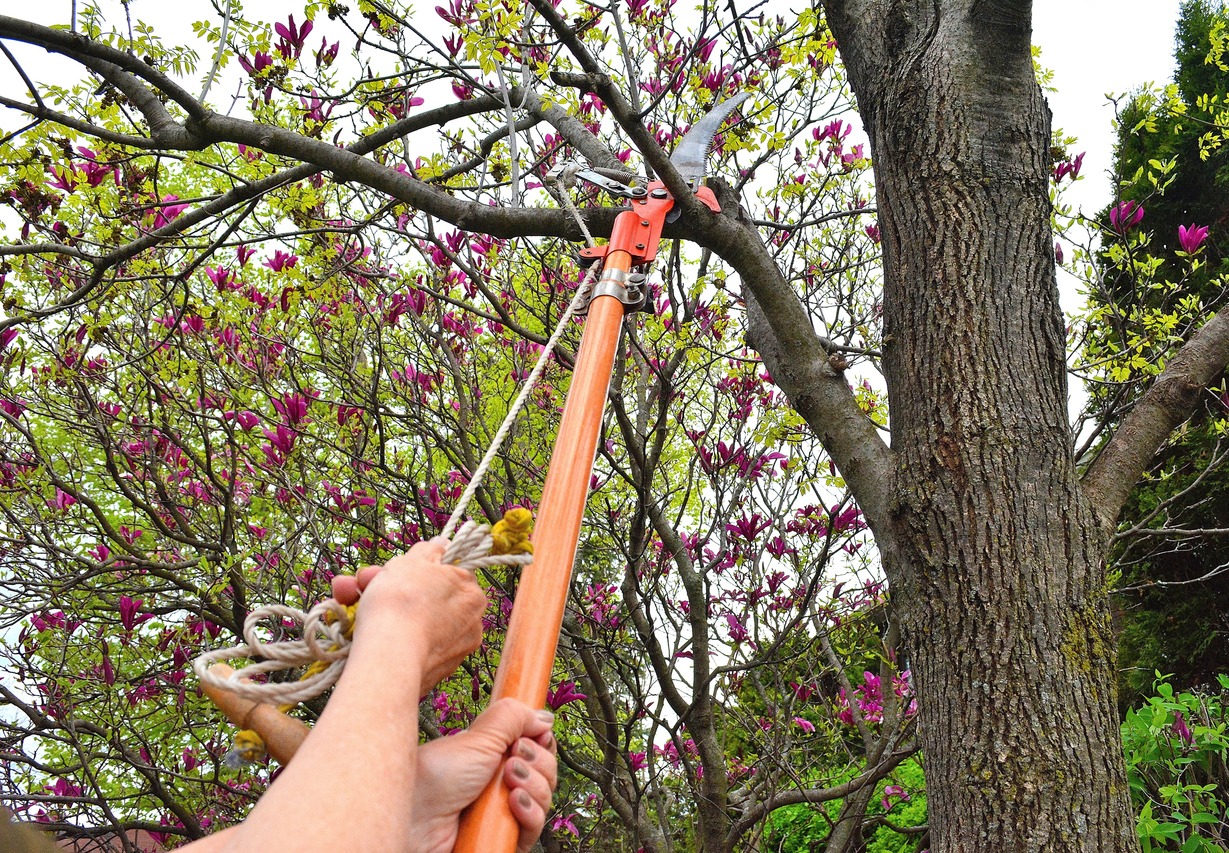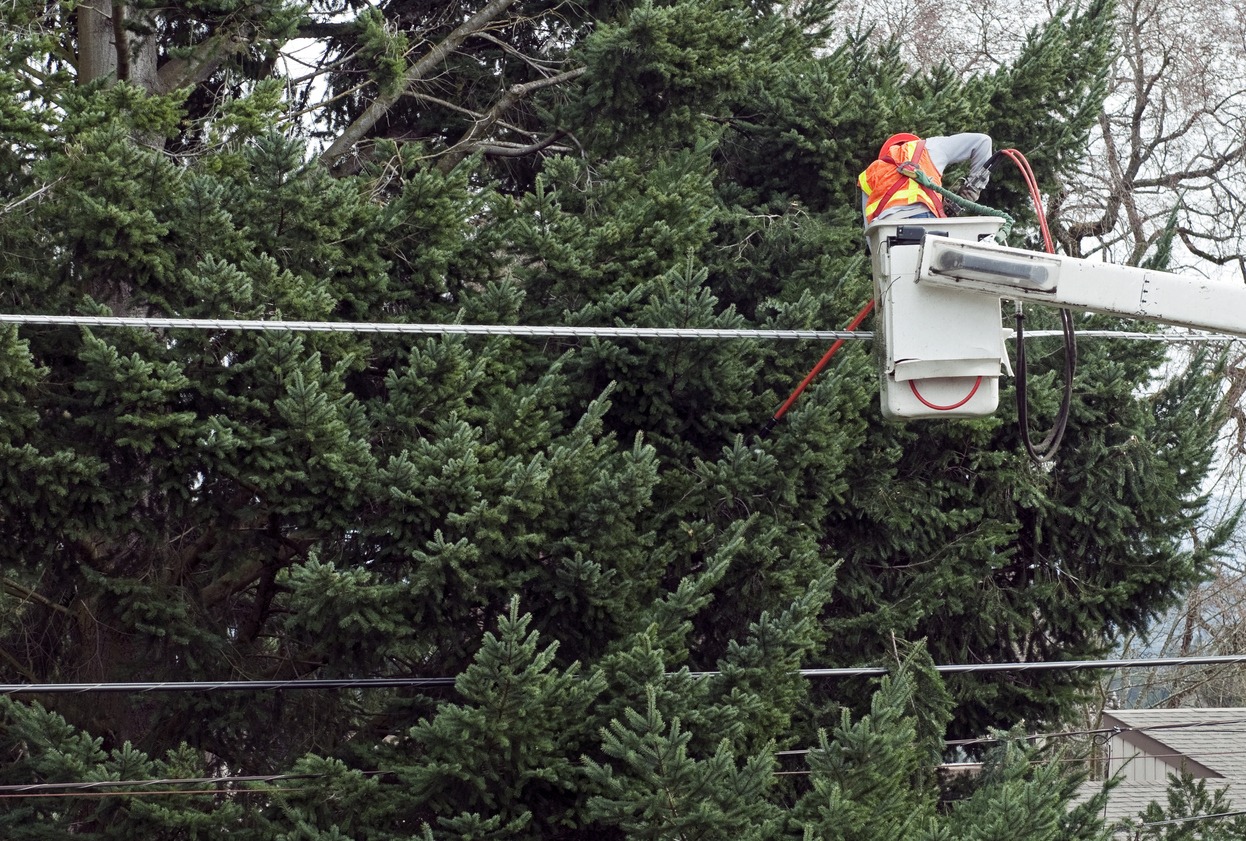Introduction
A pole saw is a type of saw that is mounted on a long pole. It is a gardening tool used for trimming tree branches and foliage. It comprises a long pole with a saw blade attached at the end, allowing the user to reach high branches without the use of a ladder.
What is it Used for?
A pole saw is primarily used for pruning branches and cutting small trees. It’s especially useful for reaching branches that are too high to safely reach with a regular saw or pruner. If you have a lot of trees on your property, a pole saw can be a great tool to have in your gardening or landscaping arsenal.
It can help maintain the health and appearance of trees by allowing you to remove dead or damaged branches, and it can also help shape and size trees as they grow. So, if you’re someone who loves spending time in the garden and care about the appearance of trees, a pole saw can be a great tool to have.
Types of Pole Saws
Each type of pole saw has its unique strengths and limitations, and the best choice for you will depend on your specific needs and preferences. It’s a good idea to consider factors such as size and type of branches you will be cutting, the amount of physical effort you are willing to put in, and your budget when deciding which type of pole saw is right for you. Here are the four most common types of pole saws.
Manual Pole Saw
A manual pole saw, also known as a pruning saw or a hand saw, is a type of pole saw that is powered by hand. It consists of a long, thin pole with a single-edged blade attached to the end. The user holds the pole with both hands and uses it to reach high branches and cut them off. Manual pole saws are the most basic type of pole saws and are typically used for small pruning tasks.
Manual pole saws are lightweight and easy to use, but they require more physical effort to operate than other types of pole saws. These saws are also the most affordable and are a good choice for those who only need to use a pole saw occasionally or for small pruning jobs.
Electric Pole Saw
An electric pole saw is a type of pole saw that is powered by electricity. They are a good choice for those who need to do some light pruning and do not want to deal with the noise and emissions of a gas-powered saw. However, electric pole saws are limited by the length of the cord and the amount of time they can be used before getting hot or requiring a recharge.
Battery-Powered Pole Saw
Battery-powered pole saws are a convenient and eco-friendly alternative to gas-powered models. They are lightweight, easy to use, and produce no emissions. Some key features to look for when shopping for a battery-powered pole saw include the type and power of the battery, the length and strength of the pole, and the size and type of the chain and bar. You may also want to consider the weight and balance of the saw, as well as any additional features such as an automatic lubrication system or an anti-vibration handle.
Gas-powered Pole Saw
A gas-powered pole saw is a type of pole saw that is powered by a small gas engine. It contains a long, thin pole with a small chainsaw attached to the end, and it does not have a cord, so it can be used anywhere. Gas-powered pole saws are the most powerful type of pole saws and are typically used for larger pruning tasks.
These can cut through thicker branches and trees with ease and can be used for extended periods without the need to stop and recharge. However, gas-powered pole saws are louder and produce emissions, and they require regular maintenance such as oil changes and spark plug replacements. They are also more expensive than electric or manual pole saws.
Weight
| Manual pole saw | lightest |
| Battery-powered pole saw | Moderately lighter than gas-powered |
| Electric pole saw | No battery is included so it is lighter than battery-powered pole saws |
| Gas-powered pole saw | Heaviest of all pole saws |
If you want more functionalities and power, gas-powered pole saws are a better option, but heavier. All other types of pole saws will just work fine for you if you are only into light pruning
How High Can I Cut?
Before getting a pole saw, check out its reach. For instance, powered pole saws usually extend up to 12 feet in length. If a pole saw’s length is smaller than what you require, you should consider getting a bigger one. A common practice of many manufacturers is advertising the maximum reach of the pole saw rather than providing the maximum extension length.
They add about 3 to 4 feet onto the pole extension length to calculate the pole saw’s maximum reach, which might be misleading as height of individuals varies. Make sure to go for the maximum extension instead of reach. You might also need a handy saw (without any pole extension) that can cut through both green and dry wood. For this purpose, folding saws would be a great addition to your woodworking or gardening toolbox.
Usage
Getting the right pole saw depends on how often you will be using it. For example, if you plan to use the pole saw daily, your best bet would be to get a gas-powered pole saw which is more durable and long-lasting than electric or battery-powered saws. It is a choice of professionals who need to work for an extended period of time on a regular basis. For a DIYer or homeowner, an electric saw is recommended. A manual pole saw makes more sense for casual users who just need one occasionally.
FAQs
Can I use a pole saw to cut through metal or concrete?
No, a pole saw is not designed to cut through metal or concrete. It is intended for cutting wood and plant materials. Using a pole saw on metal or concrete can damage the saw blade and potentially be hazardous.
Can I use a pole saw to cut down a tree?
While it is possible to cut down a small tree with a pole saw, it is generally not recommended. Pole saws are best suited for pruning and trimming branches, rather than cutting trees. For larger trees, it is recommended to use a chainsaw.
Can I use a pole saw in wet or rainy conditions?
It is generally not recommended to use a pole saw in wet or rainy conditions, as the moisture can damage the saw and create slippery conditions that increase the risk of injuries. If you must use the saw in wet conditions, make sure to dry it thoroughly after use and follow the manufacturer’s recommendations for storage and maintenance.
How long does a pole saw blade last?
The life of a pole saw blade depends on several factors, including the type of wood being cut, the blade’s condition, and the frequency of use. In general, a well-maintained blade should last for several seasons of use. If the blade becomes damaged or excessively worn, it will need to be replaced.
Can I use a pole saw with a damaged or bent blade?
No, a damaged or bent blade can be dangerous to use and can cause the saw to slip or malfunction. If the blade becomes damaged, it should be replaced immediately.
Conclusion
A pole saw is an excellent option for pruning and cutting tree limbs. You can choose from four primary choices of pole saws according to your preferences. Gas-powered pole saws offer more power, but they come with hefty price tags and are heavier. As a homeowner, if your jobs are straightforward and you don’t want to spend a lot of money, consider manual and electric pole saws, both of which are good enough for the job.


